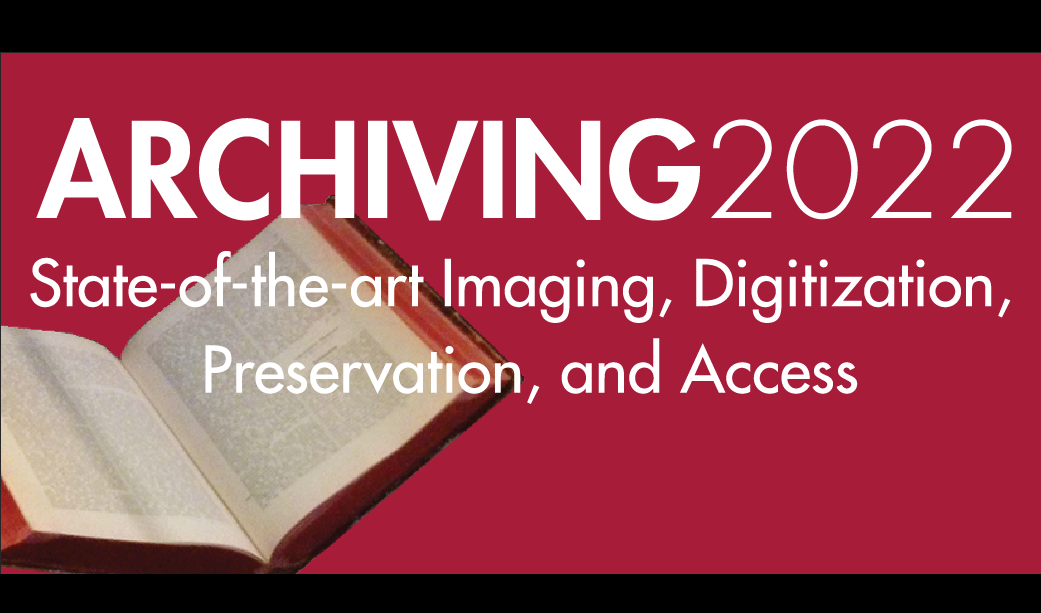

This paper presents an imaging system that reads texts from books that open less than 30 degrees (due to their fragile bindings) and whose paper quality is degraded. In particular, the system operates on the Scheimpflug principle to correct the geometric distortion necessarily introduced when imaging barely open books. We introduce the guiding principles behind such a system, discuss how it is calibrated and set up, present the results of imaging two dime novels from early twentieth century, both with fragile bindings, and discuss lessons we learned.
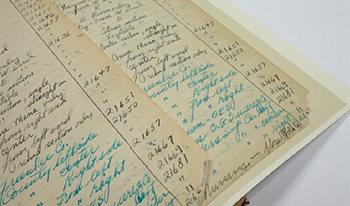
The goal of digitization is typically to create digital assets which represent the physical object as a means of digital preservation or access. On occasion, projects require bringing those digital images back into the physical world in the form of a facsimile. While reproducing objects for display and/or use is a common and well-established practice, there are unique cases that require innovative applications of existing tools and methods. Working closely with NEDCC’s book conservation lab, we imaged eight ledger books and then printed two copies of each to be rebound into near-identical, usable copies. Using this project as a case study, we will share some of the successes and hurdles we encountered while working through this large volume of material, with particular attention to deviations in image capture and processing workflows when producing bound facsimiles.

The problems and issues which can affect color film restoration may involve all the steps of the cinematographic and photographic restoration workflow, from the digitization to the final quality assessment. In this paper, I aim at providing an overview of the main problems which can occur throughout a digital restoration, with particular focus on glare effect, and at offering some novel solutions.
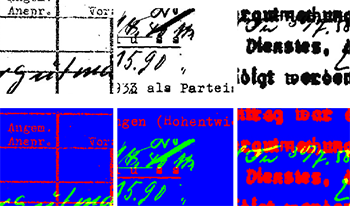
Historical archival records present many challenges for OCR systems to correctly encode their content, due to visual complexity, e.g. mixed printed text and handwritten annotations, paper degradation, and faded ink. This paper addresses the problem of automatic identification and separation of handwritten and printed text in historical archival documents, including the creation of an artificial pixel-level annotated dataset and the presentation of a new FCN-based model trained on historical data. Initial test results indicate 18% IoU performance improvement on recognition of printed pixels and 10% IoU performance improvement on recognition of handwritten pixels in synthesised data when compared to the state-of-the-art trained on modern documents. Furthermore, an extrinsic OCR-based evaluation on the printed layer extracted from real historical documents shows 26% performance increase.
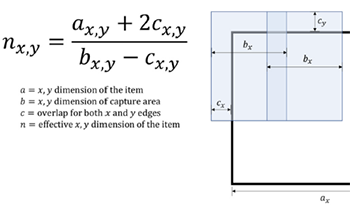
Over the last decade, medium format imaging solutions have made instantaneous capture of large 2D objects possible, dramatically increasing the throughput and image quality of digitization in cultural heritage applications. Despite this, the process of digitizing oversized objects, such as original artwork and scroll manuscripts is substantially more complicated; little research has been conducted on the efficacy of using such medium format solutions for this purpose. In this study, a workflow for digitizing a collection of oversized artwork according to the Federal Agencies Digital Guidelines Initiative (FADGI) guidelines was developed. Successful development of this process demonstrates the potential this process and others like it have to expand the applications of cultural heritage digitization solutions.
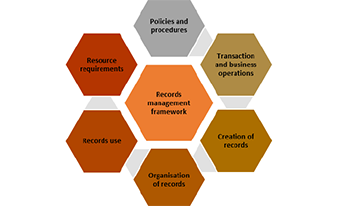
E-justice is an electronic records management system aimed at enhancing the availability of electronical court records to support the discharge of justice. Urgent need to assess the relevance of the system was required as statistical information from 2019, indicated that approximately 25440 high court cases could not be finalised between 2015 and 2019 due to a lack of access to reliable court records. This created perpetual embarrassment as suspects who are innocent until proven guilty, remain imprisoned. Towards exploring the enhancement of an e-justice system to expand access to records in the judiciary, the study adopted a qualitative approach in which data was collected through interviews and observation. Twelve participants were interviewed, and numerous high court offices visited, to assess the extent to which improvements to an e-justice system is required. Findings revealed that a lack of specific policies and procedures to govern the management of records impacted negatively on the access to court records. In addition, financial limitations, old ICT infrastructure, and poor human resource skill further exacerbate the problem. The solution towards the problem is based on the development and implementation of an e-justice framework where records are captured, categorised, and made accessible to high courts through advanced information and communication infrastructures. Towards this end, it is recommended that the Namibian Judiciary embark on a change management process where updated ICT infrastructure support records management life cycle functions and where all members of the judiciary are well versed in the use of an e-justice system.

This research focuses on the benefits of computer vision enhancement through use of an image pre-processing optimization algorithm in which numerous variations of prevalent image modification tools are applied independently and in combination to specific sets of images. The class with the highest returned precision score is then assigned to the feature, often improving upon both the number of features captured and the precision values. Various transformations such as embossing, sharpening, contrast adjustment, etc. can bring to the forefront and reveal feature edge lines previously not capturable by neural networks, allowing potential increases in overall system accuracy beyond typical manual image pre-processing. Similar to how neural networks determine accuracy among numerous feature characteristics, the enhanced neural network will determine the highest classification confidence among unaltered original images and their permutations run through numerous pre-processing and enhancement techniques.

Character recognition is widely considered an essential factor in preserving and digitizing historical handwritten documents. While it has shown a significant impact, the character recognition of historical handwritten documents is still a challenging task. This work aims to present a study on building a character recognition system for a handwritten ancient Hebrew text utilizing convolutional neural networks, dealing with material degradation, script complexity, and varied handwriting style. Our research underlined the importance of creating a ground-truth dataset for a robust and reliable character recognition system. Moreover, this study compares the performance of four convolutional neural network models applied to our dataset.
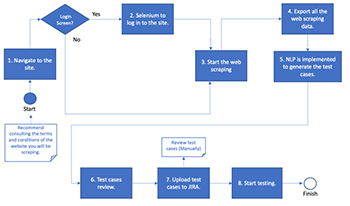
The main purpose of software testing is to identify what the software does and whether it matches its functional expectations. Applying a test plana allows one to prevent problems in early stages, identifying and addressing solutions before a project goes into production. Test cases play an important role during the software testing phase. A test case is a document with comprehensive details and sequences of actions to guide the software tester through the steps that need to be taken and the outputs that are expected. _x005F_x000D_ _x005F_x000D_ The proposed system generates test cases based on scraped data that are used to interact with Natural Language Processing (NLP) approaches to generate functional test cases. A project management software (e.g., JIRA) is integrated with the JIRA python library to manage the test cases by the software tester.